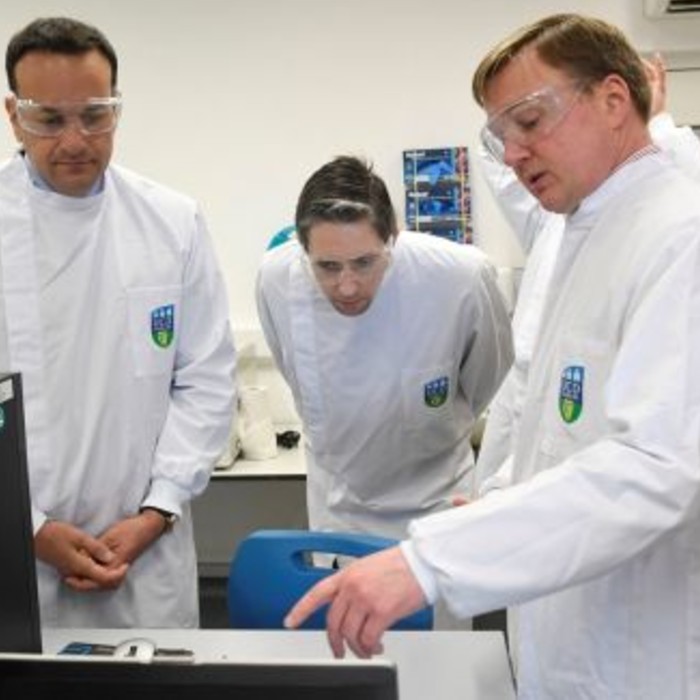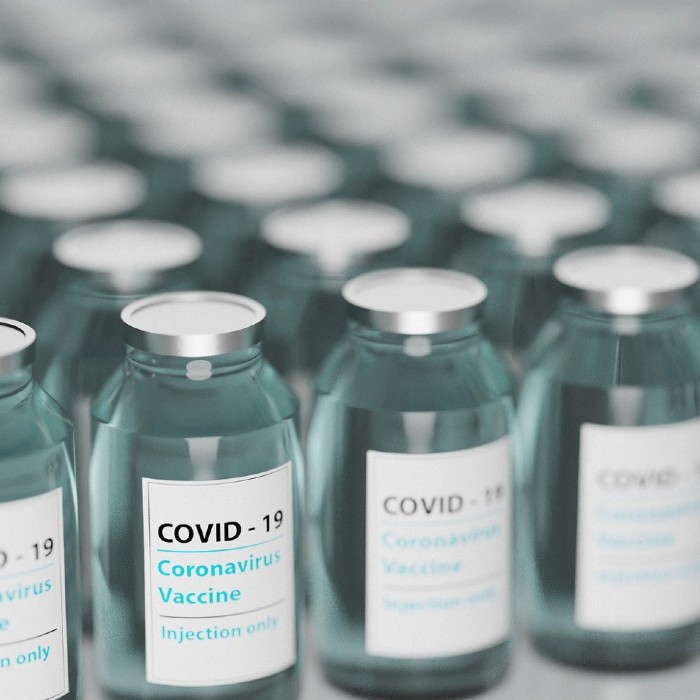Manufacture of Novel Covid-19 Laryngoscopes for Airway Intubation
Lead Researchers: Professor of Anatomy James FX Jones, UCD School of Medicine
Funder: Science Foundation Ireland/Enterprise Ireland/IDA Ireland joint Covid-19 Rapid Response Fund
Professor Jones has formed an interdisciplinary cohort, including Clinical Professor and Consultant Anaesthetist Conan McCaul (UCD School of Medicine and Rotunda/Mater Hospitals) and Professor Denis Dowling (I-Form, UCD School of Mechanical and Materials Engineering) to manufacture novel Covid-19 Laryngoscopes for airway intubation.
Owing to the proximity of the anaesthetist to the infected airway of the patient, intubation is one of the highest risk procedures in managing Covid-19 patients. The project team is exploring the manufacture of a cheap, disposable, 3D printed video-laryngoscope customised for Covid-19 patients. The device will incorporate novel features which protect the user and keep the patient well oxygenated.
Problem solving
Covid-19 patients who develop respiratory failure require intubation and artificial ventilatory support. The passage of a tube into the trachea presents a uniquely dangerous exposure to pathogens borne by respiratory droplets. High flow nasal oxygen (up to 70 litres per minute) commonly used prior to Covid-19 is avoided as it can aerosolize the virus (Cook et al. 2020). It is recommended that the operator distances himself from the patient airway which is not possible with direct laryngoscopy.
Video-laryngoscopy is advocated as the standard of care but current designs do not partition the patient’s airway from the operator and the Covid-19 patient is at greater risk because oxygen delivery must be suspended during intubation. Thus, operators continue to be exposed to a virus during active or passive exhalation. At present transparent plastic bags are being used to minimize escape of secretions during the later stages of airway management.
Although there are commercial video-laryngoscopes, none offers a protective envelope or special channels for distal oxygen delivery or suction to clear secretions. All these laryngoscopes are expensive or scarce when pandemics strike. In addition, most of these instruments are not disposable and can act as transmitters of infection.
What will the research project do?
This proposal aims to design a cheap, disposable, 3D printed video-laryngoscope customised for Covid-19 patients. An estimate of unit manufacture cost is €2 for casing and €28 euro for all electronic elements and WiFi camera.
The project is executed by multidisciplinary team of anaesthetists, engineers and anatomists who together will rapidly design, print and test a working protype manufactured in accordance with ISO7376 standards (specific to medical laryngoscopes).
Although there are recent examples of 3D printed laryngoscopes (the most notable success being the AirAngel), these designs focus primarily on housing the fibre-optics of the system.
The design features of this novel Covid-19 laryngoscope will not only include a fibreoptic channel but also an oxygen delivery channel and a suction channel to remove secretions which can obscure the view of the glottis (airway anatomy) in very sick patients.
The design will also have a special channel(s) for oxygen delivery.
A flange at the base of the handle will serve as a radial anchor for a transparent sheet which partition the patient from intubating team – this is also novel. This may be detached and used when removing the tube.
An ergonomic handle adaptation will assist with the difficult airway.
Both standard geometry blades and hyper-angulated blades options will be produced, the latter being important when intubation is difficult, as occurs in 5-10 % of the population.
Research Impact
At time of writing, the long term impact of Covid-19 is unknown. The mutability of the virus is unknown and potential efficacy of vaccine development is unproven. As an action to mitigate current and future pandemics it is prudent to refine medical equipment to withstand the urgency and demands of infectious disease.
This research was instigated by personal experiences of the anaesthetist co-applicants who work in three major tertiary Hospitals in Dublin. The loss of key expert frontline anaesthetists or ICU staff through contagion would be catastrophic for respiratory care delivery.
This Covid-19 laryngoscope will offer the following benefits:
- Protect frontline anaesthetists from Covid-19 secretions
- Protect patients from cross contamination. The majority of patients in intensive care units and undergoing elective surgery are intubated. Over 15,000 patients have been intubated in the Mater Hospital alone in the 30 month period to the date of writing
- Protect patients from hypoxia (low oxygen levels) during intubation
- Protect patients from risk of aspiration of gastric contents
- Protect theatre staff from infection as the devise is disposable
- Decrease incidence of prolonged or difficult intubations due to inbuilt suction (5-10%)
- Decrease HSE expenditure as the device is very cheap. The range of commercial device costs is approximately €1,500-10,000 (Verathon Glidescope has a >4000% mark-up). This device will cost €30
- Minimize Ireland’s dependence on international supply chains
- Protect Health Care workers in the developing world from Covid-19. This relates to th cheapness of the device and the ease of remote downloading of design files
Project Partners
Conan McCaul, Department of Anaesthesia, Mater Hospital & Rotunda Hospital Dublin
Myles Monaghan, Department of Anaesthesia, Beaumont Hospital, Dublin
Denis Dowling, Director, I-Form Advanced Manufacturing Research Centre
Andrew Dickson, UCD I-Form Advanced Manufacturing Research Centre, UCD
References
Cook TM et al. Consensus guidelines for managing the airway in patients with COVID‐19: Guidelines from the Difficult Airway Society, the Association of Anaesthetists the Intensive Care Society, the Faculty of Intensive Care Medicine and the Royal College of Anaesthetists. Anaesthesia. 2020 Mar 27


